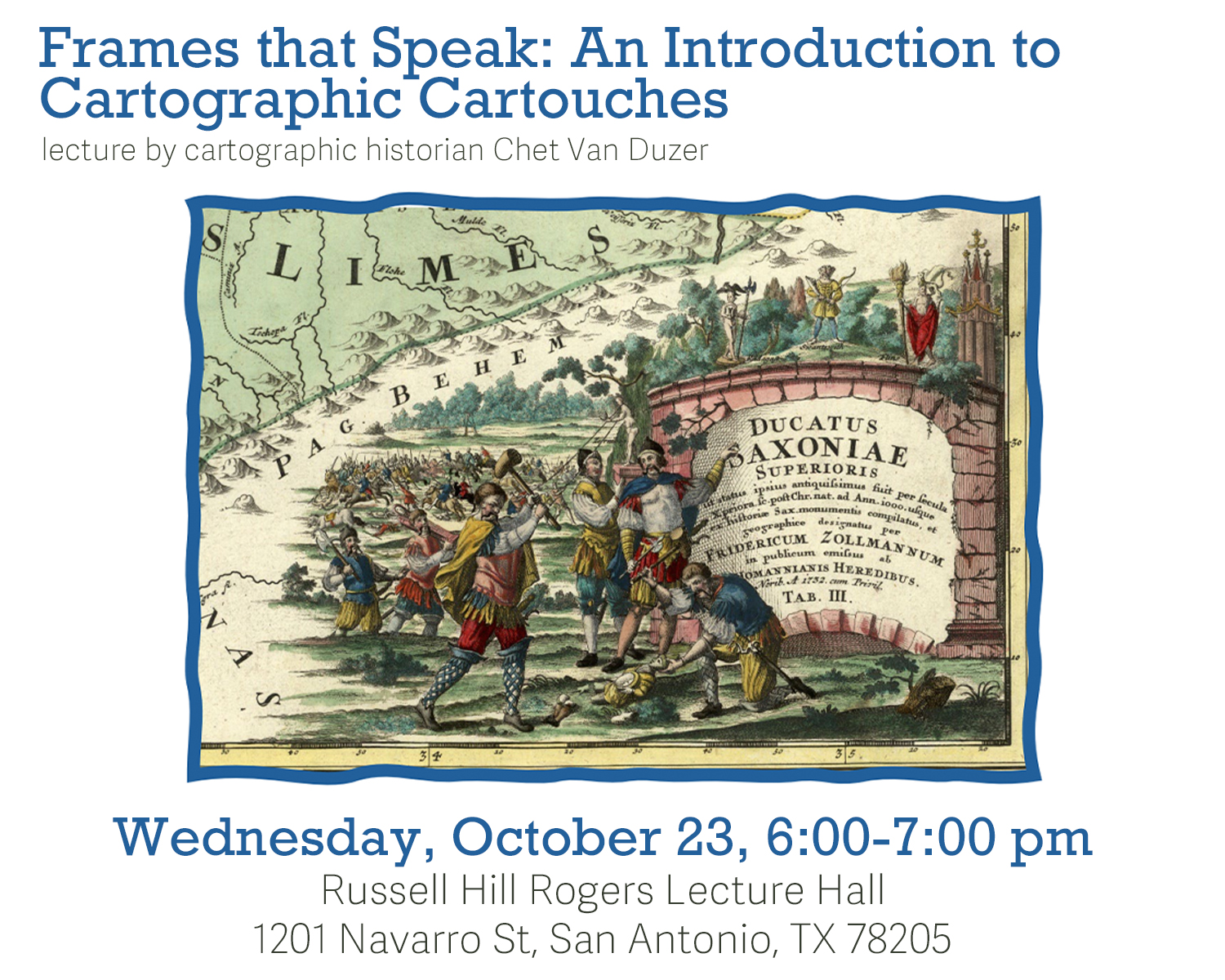
Description
Many old maps are as much works of art as tools for getting from one place to another, and one of the most engaging artistic embellishments of these maps are the decorative frames called cartouches, which often surround the map’s title and other details. Cartouches were an important cartographic design element from the fifteenth to the nineteenth century and continue to be used on twenty-first century maps. Although they are one of the most visually engaging elements on maps, and despite the fact that it is often through the decoration of the cartouche that the cartographer speaks most directly to the viewer, revealing his or her interests or prejudices, there is no detailed study of them, no discussion of their earliest history or development, and no attempt to interpret the symbolism of a large number of them together. In this talk I will discuss the early history and development of cartouches, examine some of their sources, and explain their symbolism of several remarkable cartouches in detail.
Chet Van Duzer is author of Sea Monsters on Medieval and Renaissance Maps and Apocalyptic Cartography: Thematic Maps and the End of the World in a Fifteenth-Century Manuscript, among many others and is currently a Visiting Research Fellow at the University of Western Australia and a Board Member of The Lazarus Project at the University of Rochester
Join us for a lecture on cartographic cartouches by Chet Van Duzer in our Russell Hill Rogers Lecture Hall.
Location
Russell Hill Rogers Lecture Hall
Category:
Campus Events


